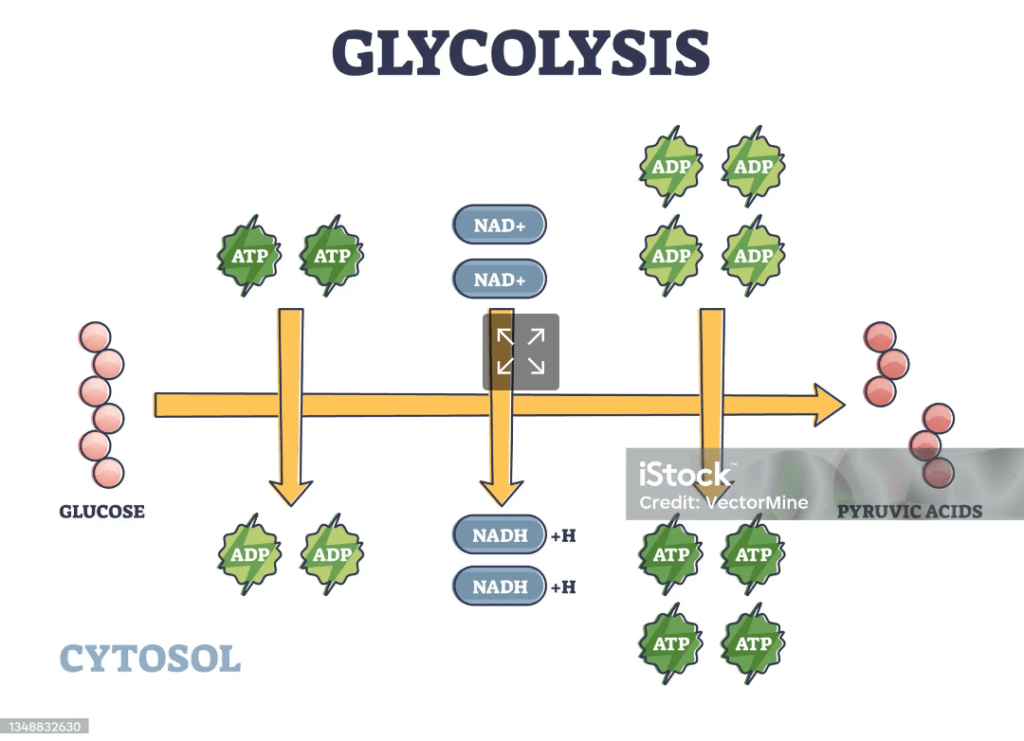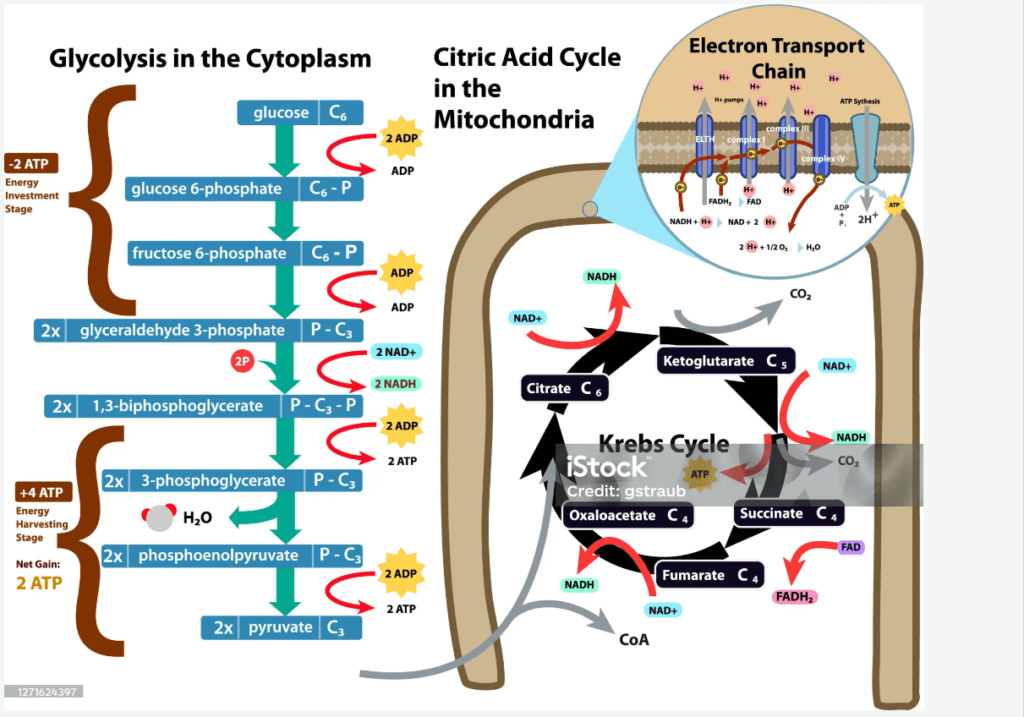Glycolysis is a fundamental and efficient pathway for cells to extract energy from glucose, which is essential for powering various cellular activities. This process breaks down glucose into pyruvate, producing ATP (the primary energy currency of the cell), and NADH (which can be used in further energy-producing reactions).
Glycolysis is particularly vital as it can function both in the presence and absence of oxygen, allowing cells to generate energy under aerobic conditions, where oxygen is available, and anaerobic conditions, where it is not. Additionally, the intermediates produced during glycolysis serve as building blocks for other important metabolic pathways, contributing to the overall metabolic flexibility and adaptability of the cell.

Glycolysis is a metabolic pathway that breaks down glucose, a six-carbon sugar, into two molecules of pyruvate, each containing three carbons. This process occurs in the cytoplasm of cells and generates a net gain of energy in the form of ATP (adenosine triphosphate) and NADH (nicotinamide adenine dinucleotide). Glycolysis is the first step in both aerobic and anaerobic respiration, providing energy and metabolic intermediates for further cellular processes.

Glycolysis plays a crucial role in the human body, serving multiple vital functions beyond merely breaking down glucose for energy. Here are the key reasons why glycolysis is significant:
1. Energy Production
Glycolysis is the first step in the cellular process of extracting energy from glucose. This process is essential for providing quick energy, especially in cells that have high energy demands or are in low-oxygen conditions.
- ATP Generation: Glycolysis produces a net gain of 2 ATP molecules per glucose molecule. This is particularly important for cells with high energy demands, such as muscle cells during intense exercise.
- Anaerobic Energy Production: In the absence of oxygen, glycolysis allows cells to produce ATP anaerobically. This is vital during strenuous activities when oxygen levels are low.
2. Precursor to Further Metabolism
- Link to Aerobic Respiration: The pyruvate produced in glycolysis can be further oxidized in the mitochondria via the citric acid cycle (Krebs cycle) and oxidative phosphorylation, generating a significantly larger amount of ATP.
- Fermentation: In anaerobic conditions, pyruvate can be converted to lactate in humans, allowing glycolysis to continue by regenerating NAD+, which is required for glycolysis to proceed.
3. Metabolic Intermediates
Glycolysis provides intermediates for other metabolic pathways, which are crucial for the synthesis of various biomolecules.
- Biosynthesis: Intermediates such as glucose-6-phosphate and fructose-6-phosphate are used in the synthesis of nucleotides and amino sugars.
- Glycerol Production: Dihydroxyacetone phosphate (DHAP) can be converted to glycerol-3-phosphate, which is a precursor for the synthesis of triglycerides and phospholipids.
4. Regulation of Metabolism
Glycolysis is tightly regulated, and its intermediates and products influence various metabolic pathways.
- Insulin and Glucagon Regulation: Glycolysis is stimulated by insulin, which promotes glucose uptake and its breakdown in cells. Conversely, glucagon inhibits glycolysis, favoring gluconeogenesis and glycogenolysis to increase blood glucose levels.
- Allosteric Regulation: Enzymes in the glycolytic pathway, such as phosphofructokinase-1 (PFK-1), are key regulatory points that respond to cellular energy levels and other metabolic cues.
5. Clinical Relevance
Abnormalities in glycolysis can have significant clinical implications.
- Diabetes: Impaired regulation of glycolysis is a hallmark of diabetes, where glucose uptake and utilization are disrupted.
- Cancer: Many cancer cells exhibit increased glycolysis rates, known as the Warburg effect, to support rapid cell proliferation even in the presence of oxygen. This knowledge is used in cancer diagnostics and therapy.
6. Adaptation to Different Conditions
Glycolysis allows cells to adapt to various physiological conditions and energy demands.
- Exercise: During intense exercise, muscles rely on glycolysis for quick energy as oxygen becomes limited.
- Hypoxia: In low oxygen environments, such as at high altitudes or in ischemic tissues, glycolysis provides a means for cells to survive and maintain function.
Conclusion
Glycolysis is indispensable for the human body, providing energy rapidly and efficiently under various conditions. It serves as a bridge between anaerobic and aerobic metabolism, supplies essential metabolic intermediates, and is integral to the regulation of overall metabolic homeostasis. Understanding glycolysis is crucial for appreciating how cells generate energy and maintain metabolic balance, and it has significant implications for health and disease management.